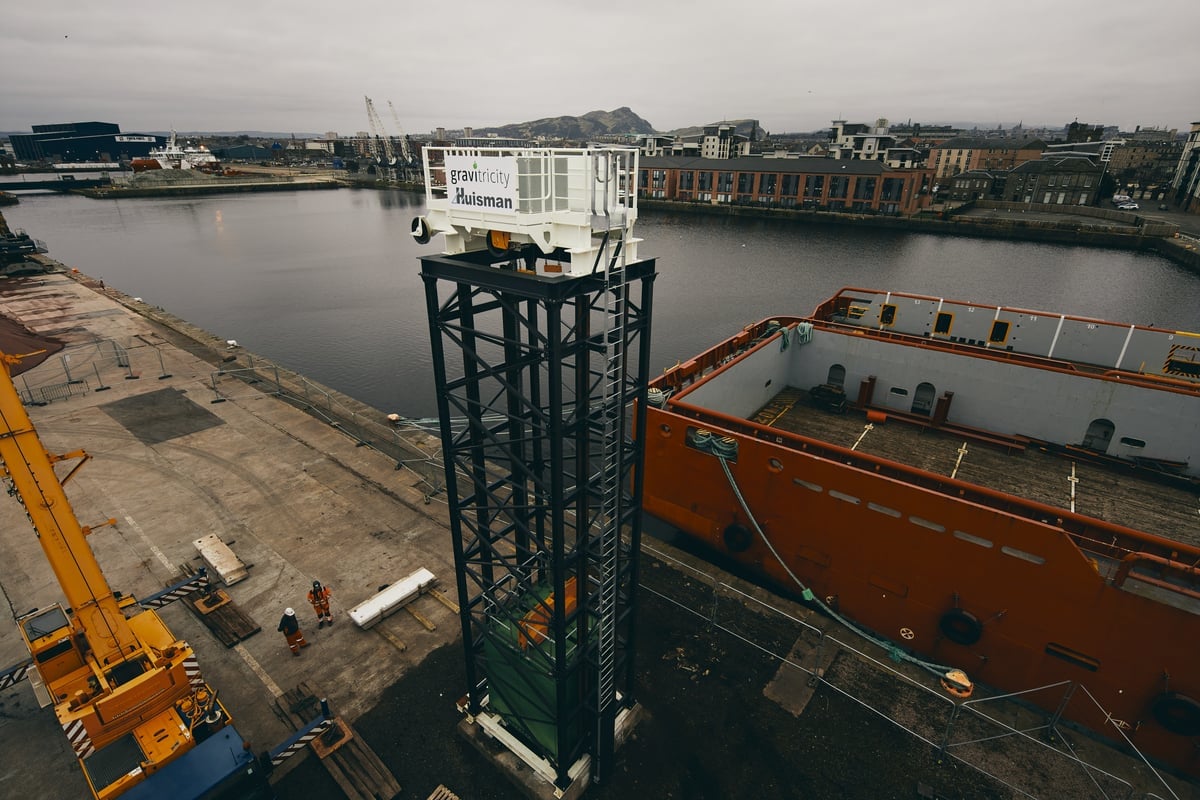
The expression “What goes up must come down” is often taken figuratively, but in Scotland it really does refer to the physics of gravity. In the Port of Edinburgh, a pilot rig has been under construction for a week now to test a new form of energy storage.
If the trial is successful, the system will be put into practice on a large scale. Weights of up to 5,000 metric tons will then be sent back and forth through shafts as deep as 1,500 meters.
The storage system is based on the basic principle of lifting and lowering heavy weights to store and release energy. The demonstration rig is made up of a 15-meter-high lattice tower, two 25-ton weights suspended from steel cables plus two generator units connected to the grid.
The idea of the storage system comes from Peter Fraenkel, a Scottish naval engineer. He is the founder of Gravitricity, a company that is going to exploit his concept for temporarily storing surplus (e.g. wind and solar) energy. In effect, it is an alternative to energy storage in batteries.
Mine shafts
If the trial is successful, the system will be put into practice on a grand scale. The weights that will then be used will be up to 5000 metric tons. The heavier the weight, the more energy is released. The weights will be sent back and forth through vertical shafts up to 1,500 meters deep. The underground shafts can be dug from scratch, but the idea is also to use abandoned mine shafts as much as possible.

The weight is guided by a system of tensioned guide wires to prevent the weights from swinging around and damaging the shaft. The winch system can be precisely controlled using electric drives to ensure that the weight remains stable in the shaft.
Energy Storage
This method offers tremendous advantages, according to Gravitricity. Like the fact that the system has a long lifespan and is flexible. For example, the system is capable of operating slowly at low power levels or quickly at high power levels. It also has an extremely fast response time. Calculations indicate that full power is reached within a second. This is important in situations when there are fluctuations in frequencies.
New shafts can be dug near where th electricity grids are. These can be near residential areas, industrial parks, or soccer stadiums. A typical system is good for powering 30,000 homes for two hours. It would be a much cheaper way than other principal forms of energy storage (especially litium-ion batteries). Not least because unlike batteries, this method releases (new) energy continuously.
The rig in Scotland is being built by Huisman, a Dutch company that designs and builds heavy construction equipment for the on- and offshore market.
The pilot plant will be put into operation in April.
Also read about how eggshells are good as lithium-ion capacitors.








